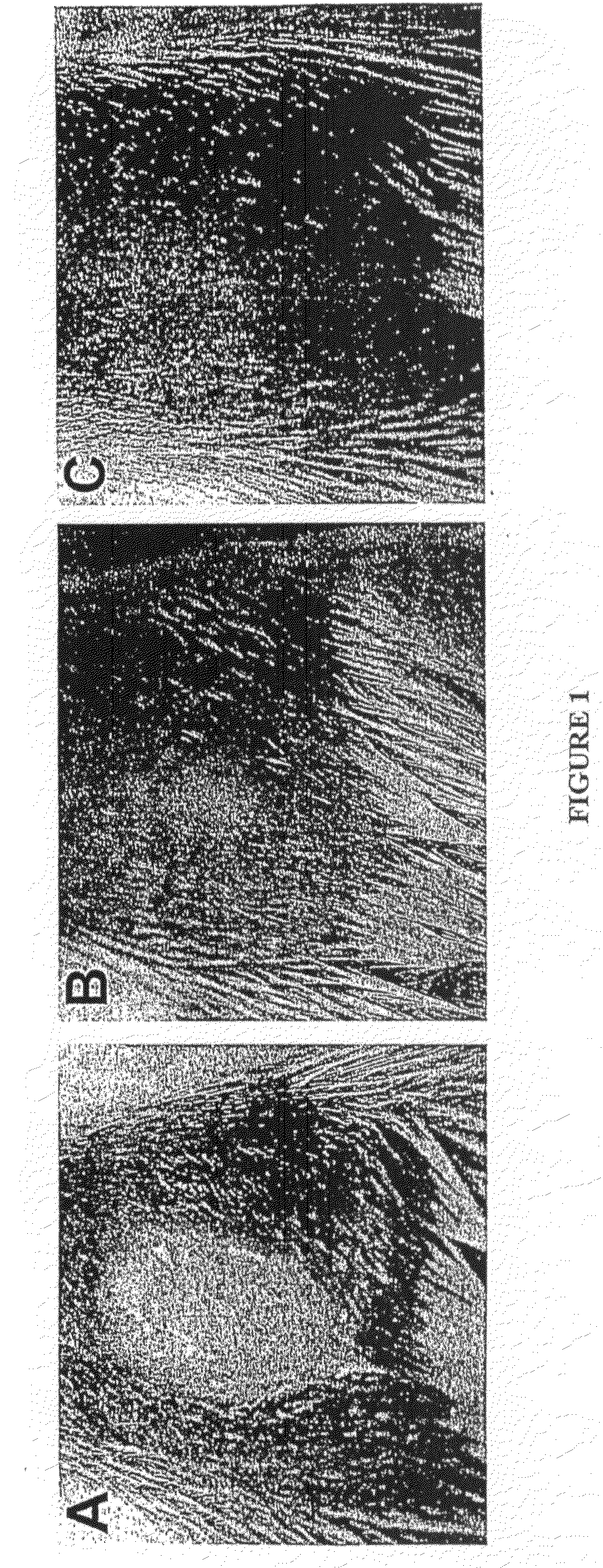Mutant F. turlarensis strain and uses thereof
a technology of f. turlarensis and mutant strains, which is applied in the field of attenuation of f. turlarensis, can solve the problems high mortality rate of untreated respiratory tularemia, and virulence factors, and achieve the effect of attenuation of virulen
- Summary
- Abstract
- Description
- Claims
- Application Information
AI Technical Summary
Benefits of technology
Problems solved by technology
Method used
Image
Examples
examples
[0038]Bacteria. F. tularensis LVS was originally obtained from the American Type Culture Collection. (ATCC 29684). The F. tularensis strain FSC033 / snMF (subspecies tularensis) was originally isolated from a squirrel in Georgia USA, the strains SCHU S4 (subspecies tularensis), FSC237, and a spontaneous mutant of the SCHU S4 strain, SCHU AV (abbreviation for AVirulent) (also designated as FSC 043), were all obtained from the Francisella Strain Collection (FSC) of the Swedish Defence Research Agency, Umeå. The mutant strains ΔFTT0918, ΔFTT0919, and ΔigIC were all derived from the SCHU S4 strain as detailed below. For the present study, stock cultures of all strains were prepared by growing them as confluent lawns on cysteine heart agar supplemented with 1% (w / v) hemoglobin (CHAH). Bacteria were harvested after 48-72 h incubation at 37° C. in an atmosphere of 5% CO2 into freezing medium consisting of modified Mueller Hinton broth containing 10% w / v sucrose. Stocks were aliquoted in a vo...
PUM
| Property | Measurement | Unit |
|---|---|---|
| volume | aaaaa | aaaaa |
| temperature | aaaaa | aaaaa |
| internal diameter×150 | aaaaa | aaaaa |
Abstract
Description
Claims
Application Information
 Login to View More
Login to View More - Generate Ideas
- Intellectual Property
- Life Sciences
- Materials
- Tech Scout
- Unparalleled Data Quality
- Higher Quality Content
- 60% Fewer Hallucinations
Browse by: Latest US Patents, China's latest patents, Technical Efficacy Thesaurus, Application Domain, Technology Topic, Popular Technical Reports.
© 2025 PatSnap. All rights reserved.Legal|Privacy policy|Modern Slavery Act Transparency Statement|Sitemap|About US| Contact US: help@patsnap.com



